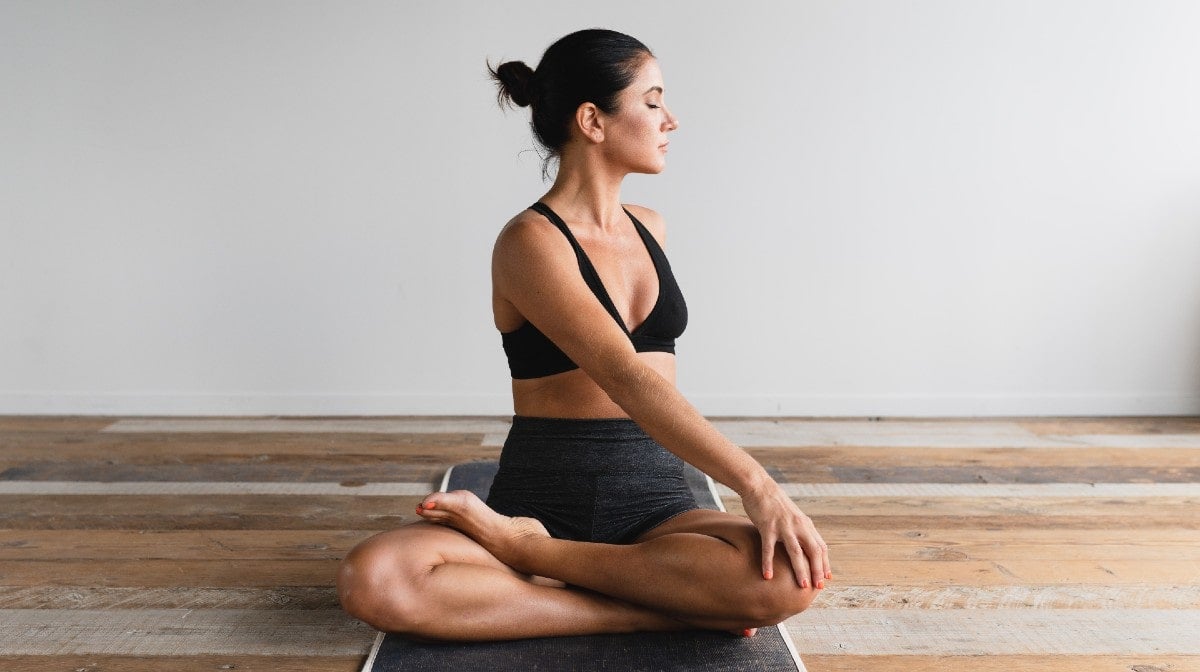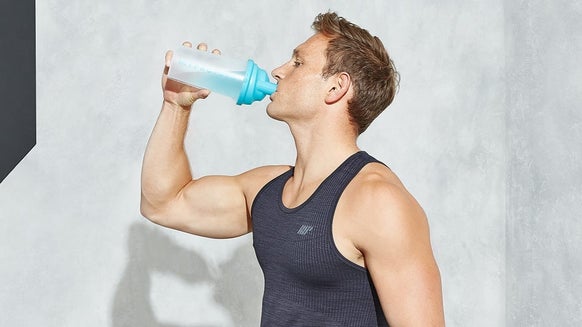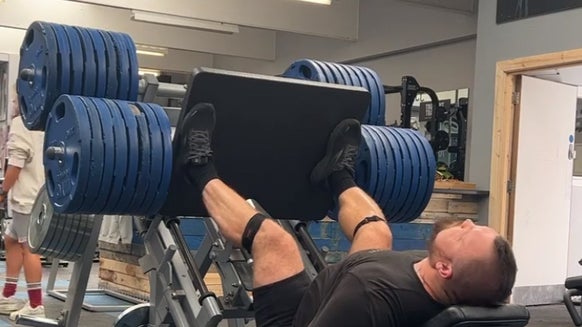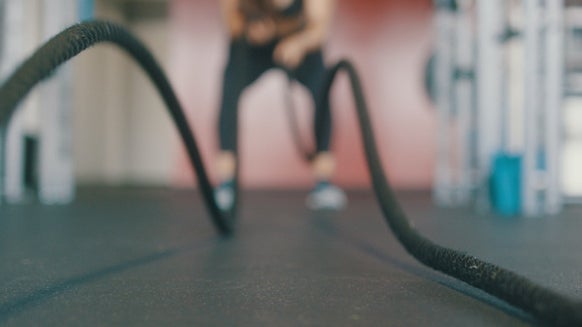
Warming up your muscles to prepare for exercise is a very well researched area of exercise science, and the science strongly supports the positive effects of warm-ups on performance and reduced prevalence of specific injuries. Warming up should not be overlooked as not only does it provide these benefits, but can also add a lot of cumulative volumes for your muscles to adapt to over the years (i.e. a 15 minute warm-up with low-intensity exercise before every session will still contribute to you making gains in the long term!).
How does warming up help to prevent injury?
Muscles become warm as a result of increased blood flow to the area – which may be due to an external heat source causing more blood flow to the skin to help radiate heat away from the body (thus increasing muscle temperature moderately). When we are warming up for exercise, however, the increased activity of the muscles facilitates increased blood flow, which in turn increases the temperature of the muscle.
Increasing muscle temperature improves the elasticity and preparedness to perform of the muscle, which not only reduces the risk of injuries like muscle strains, but also significantly improves the performance capacity of the muscle.
Are there additional benefits?
Reduced pain:
Increased blood flow to muscles will also increase the temperature of the joints, which can help to resolve joint-related pain during exercise.
Improved performance:
Warm muscles and increased blood flow can result in agonist and antagonist muscles being able to contract quicker with greater force (resulting in increased strength and power output).
Training stimulus:
Warm-ups should also be considered to be a training stimulus when performed correctly. They can provide a great opportunity to work on skill-based movements, strengthen and warm up smaller synergistic muscles, and also improve your flexibility – all of which can contribute to big gains in the long run.
How long should your workout be?
This depends on a few factors, like what your goals are and how much time you have available. More intense bouts of exercise will typically need to be shorter, due to the higher energy demand, while lower intensity exercise like jogging can be done over a longer period. If you’re a powerlifter, weightlifter or long-distance runner, your training sessions may take upwards of 2 hours. For the average gym-goer, 45-90 minutes of resistance training or other training modalities like running or rowing will be enough to keep you fighting fit and healthy when performed 4-6 times per week.
What is a dynamic warm-up?
A dynamic warm-up includes movement to help increase the temperature of the working muscles. A popular and effective protocol is known as RAMP – Raise (Increase muscle temperature, core temperature, blood flow, muscle elasticity and neural activation), Activate (Engage the muscles in preparation for the upcoming session), Mobilise (Focus on movement patterns which will be used during the game, stretching and mobilising the prime movers for each movement) and Potentiate (Gradually increasing the stress on the body in preparation for the upcoming session).
Your warm-up should always finish with the main exercise you are going to train during that session – for instance, if you are going to squat, then you need to perform warm-up sets instead of jumping straight to the working load. If your workout is going to include 4x10@100kg for squats, then your warm-up sets might look like this; 1x5@50%, 1x8@65%, 1x6@80%, then start your working sets. Remember, the goal of the warm-up is to emulate the movement patterns, familiarise yourself with the load and to increase your core/peripheral muscle temperature.
What is a static warm-up?
This type of warm-up is as it suggests – lacking movement. This may consist of a few rounds of static stretches prior to exercise, but generally should be used in conjunction with a dynamic warm-up. This type of warm-up may be useful for exercise bouts that can act as their own warm-up (e.g. jogging and running – you can start at a low intensity as a ‘warm-up’, then progress to your working intensity/pace once the lower intensity has prepared your muscles for work).
The best warmups to avoid injury
1. Bodyweight Walking Lunges
Technique: Start standing upright, then step forward with one foot, maintaining your feet around shoulder width apart to ensure a stable base. Don’t let your back-knee crash into the floor, as this should be a controlled movement. Focus on allowing your hip muscles to stretch and loading those muscles with your body weight (i.e. don’t rush the movement). If you struggle to balance, you can meet your feet at the start position instead of swinging the second leg straight through.
2. Worlds Greatest Stretch
Technique: Step into a deep lunge and put the opposite hand next to your leading foot (i.e. if your right foot is forward, then put your left hand next to it). Rotate your torso, raising your hand on the same side as your leading foot straight up towards the ceiling. Hold this for 5-10 seconds and repeat on the opposite side.
3. Overhead Squat
Technique: Using a wooden dowel/pole, an empty barbell or even just with your arms elevated straight overhead, perform a squat while holding the apparatus overhead. Hold the bar using a snatch grip (grab the bar with a very wide grip that should be comfortable to hold overhead). Perform multiple controlled reps, focusing on keeping your chest up, eyes looking straight ahead, elbows locked out and back in a neutral position.
4. Kang Squat
Technique: Using bodyweight only or with extraneous load, hinge at your hip as if you are performing an RDL. When you reach the bottom of the RDL position, bend at the knees so that you then enter a normal squat position. Either perform this movement in reverse or simply stand up as a normal squat to return to the start position.
5. Resistance Band Row
Technique: Attach a moderate resistance band to a secure anchor point and step back so that there is enough tension on the band. The band should be anchored at the height of your lower ribcage. Pull or ‘row’ the band back as you would a seated cable row, with your elbows tucking to your side. Make sure this movement is performed in a slow and controlled manner as the intention is to get blood flowing and get the muscles activated.
6. Inverted Kettlebell Press
Technique: Choose a light/moderate load kettlebell (around 10kg should be plenty of stimulus for most beginners), ideally with an iron handle that has no coating, as this coating can be prone to slip. Grip the handle very firmly and invert the kettlebell so that the base is facing the ceiling and your arm is at the bottom of a typical dumbbell press position. Maintaining a tight grip, press the kettlebell up until you lock out your elbow, then slowly lower to the start position and repeat. Be sure to engage your core throughout to ensure a stable base is maintained for the press.
7. Low-Intensity Jogging
Technique: Jog on the spot or in straight lines over around 20m – this should be at a very easy pace, it’s not a race!
8. Bear Crawl
Technique: Get onto your hands and knees as if you are going to crawl, then raise your knees off the floor. In this position, ‘walk’ for around 10m – you can also do this in reverse. You should aim to stay close to the floor and perform the exercise in a controlled manner.
9. Duck Walks
Technique: Get into a squat, around parallel to the ground. Maintaining this position, walk forwards, shifting your weight onto each foot for every step. Remember to stay low to the ground and resist the urge to stand up more.
10. Shoulder Dislocations
Technique: Grab a wooden pole/PVC pipe/towel with a wide/snatch grip. ‘Pull’ both ends apart and elevate your shoulders through their full range of motion of flexion. As you go above your head, you may be able to bring the apparatus back behind your body too – this is the ‘dislocation’ part, as it requires a bit of mobility. If you struggle, then try a wider grip and also bend at the elbows if necessary (but don’t actually dislocate your shoulders!).
Take Home Message
Warming up should be a vital part of your training session if you are serious about making long term adaptations to your training. Not only will they help reduce the risk of injury, but they will help your session run smoother as your muscles will have been prepared for the challenges you will hit them with. They also present an efficient way of introducing more volume into your training, which can be a good time to focus on movement patterns. Try to use around 6 of these exercises/movements prior to each exercise session for optimal effect.







